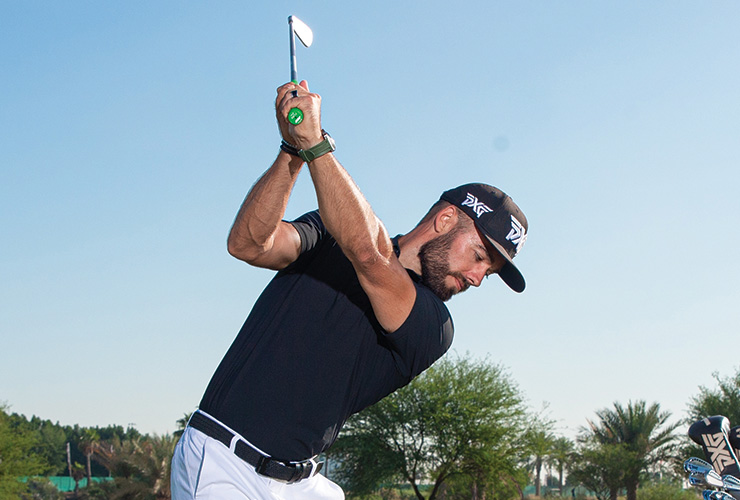By Alex Riggs
As a golfer, you’ve more than likely seen your fair share of tour-level golf swings. While it is always incredible to see just how easy they make it look, I’m sure you can also appreciate that all of their swings do not look the same. Of course, we should expect this, after all, players come in various shapes and sizes and from different athletic backgrounds. They are coached by different coaches and they grew up playing the game in different regions. Over time, golfers develop their own flavour or signature with how they move the club. Amongst all these differences, there is still one key relationship you can identify amongst most top players. This relationship involves the position of the hands, versus that of the clubhead.
BACKSWING
As the club travels back, nearly all high-level players position the clubhead outside of their hands. The arms stay connected to the rib cage and the body rotates around a tilted axis. When this happens, you can clearly see that the position of the hands is well inside that of the clubhead. What is very common amongst higher handicap players, is the rolling of the forearms in the early backswing. This move gets the clubhead well inside the position of the hands. When we consider what we want the golf club to do for us in the transition, this early backswing positioning becomes all the more crucial.
TRANSITION
As we are transitioning from the backswing into the downswing, we want the golf club to be shallowing. This is what virtually all top players do in their swings. The clubhead starts to lay down or fall behind the position of the hands and the shaft takes on a more horizontal rather than vertical appearance. When people swing back with the clubhead rolled inside the hands, it most often takes a steep or vertical path down. Although it is possible to achieve shallowing through different backswing relationships, it is often easiest to accomplish by keeping the clubhead outside the hands going back.
DOWNSWING
Work on this move by exaggerating the feeling of keeping the clubhead outside throughout the backswing. As you do this, you will feel the clubhead wanting to loop or fall behind you as you start the downswing. This is where the magic lies. Remember that we often need to go crazy with our feelings to create even the most subtle of changes, so don’t be afraid to look strange. We are trying to facilitate the shallowing transition rather than the steepening transition so this is bound to feel very different to what you are likely used to. Embrace it and enjoy the gains!
[divider] [/divider]
Alex Riggs is a Canadian born golf coach who specialises in finding simple and effective strategies to lower scores. He is a Brand Ambassador for PXG and Under Armour. For lesson inquiries, contact Alex via [email protected] or +971 55 497 7913









